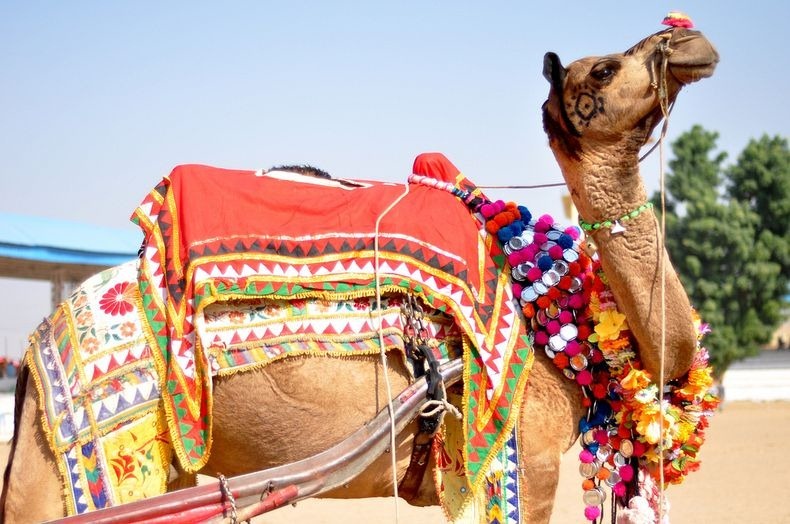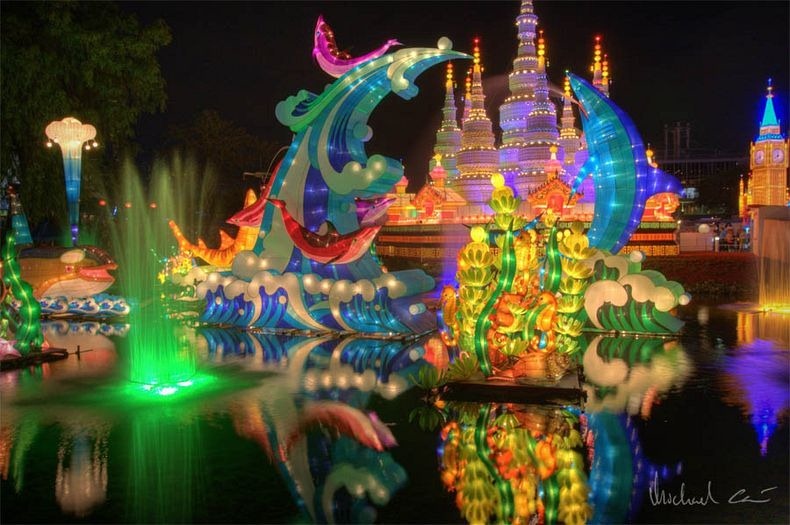Here is another round of unusual festivals celebrated in October in different parts of the world.
Tübingen Duck Race
Every year since 1999 over 7000 yellow rubber ducks are let loose in River Necker that courses through this historic town near Stuttgart in Germany. This is almost a third of the city population. The competition starts at midday and anyone with a rubber duck can participate; and if you left yours at home in the bathtub, ducks can be rented before the race. Spectators stick their name and number on the ducks, release the toy in the water and cheer along the riverbank as the mass of yellow bob up and down the designated stretch of the Neckar. A metal weight is attached to their underside so that they don’t topple over on the way. The ducks race from Alleenbrücke to Neckarbrücke is taken very seriously, because there is €10.000 worth of prizes to be won.
The duck race is on this Saturday, October 6.
Oktoberfest
Oktoberfest is a celebration of Bavarian beer from Munich’s finest breweries. Each year, around six million liters of beer is consumed along with approximately 300,000 pork sausages, 600,000 roast chickens and 80 roast ox. Only beer from Munich’s six select breweries is sold in the 14 large tents, served by beer maids carrying armfuls at a time. Aside from beer there are traditional German amusements, folk costumes, traditional music and marching bands, fair ground rides and parades to name but a few. More pictures of Oktoberfest 2012.
Photos credit: Boston Globe
Pushkar Camel Fair
The annual five-day Pushkar Fair is held in the town of Pushkar in the state of Rajasthan, India. The fair attracts hundreds of Rabadi herdsmen who buy and sell many thousands of camels here each year. The camels are decorated with colorful bits of clothes and papers for trading, and there are camel races and even camel beauty parades to take part in as well.
It is one of the world's largest camel fairs, and apart from buying and selling of livestock it has become an important tourist attraction and its highlights have become competitions such as the "matka phod", "longest moustache", and "bridal competition". In recent years the fair has also included an exhibition cricket match between the local Pushkar club and a team of random foreign tourists.

Halloween
Halloween is observed around the world on October 31, the eve before the Western Christian feast of All Hallows. Halloween is thought to have originated with the ancient Celtic festival of Samhain, when people would light bonfires and wear costumes to ward off roaming ghosts. Over time, Halloween evolved into a secular, community-based event characterized by child-friendly activities such as trick-or-treating and pumpkin carving. (See Incredible Pumpkin Carvings by Ray Villafane)
Children go from house to house dressed at witches and ghouls, asking for treats with the question, “Trick or treat?” The word "trick" refers to a (mostly idle) "threat" to perform mischief on the homeowners or their property if no treat is given. In this custom the child performs some sort of trick, i.e. sings a song or tells a ghost story, to earn their treats.
Because the holiday comes in the wake of the annual apple harvest, candy apples (known as toffee apples outside North America), caramel or taffy apples are common Halloween treats made by rolling whole apples in a sticky sugar syrup, sometimes followed by rolling them in nuts.
Diwali
Diwali popularly known as the "festival of lights," is the most well-known of the Hindu festivals. The name "Diwali" is a contraction of "Deepavali" which translates into "row of lamps". Diwali involves the lighting of small clay lamps filled with oil to signify the triumph of good over evil. These lamps are kept on during the night and one's house is cleaned, both done in order to make the goddess Lakshmi, the goddess of wealth, feel welcome. The festival is celebrated through festive fireworks, lights, flowers, sharing of sweets, and worship. The festival of Diwali extends over five days, and because of the lights, fireworks and sweets involved, it's a great favourite with children.
Diwali signifies many different things to people across the country. In north India, Diwali celebrates Rama's homecoming, that is his return to Ayodhya after the defeat of Ravana and his coronation as king; in Gujarat, the festival honors Lakshmi, the goddess of wealth; and in Bengal, it is associated with the goddess Kali. Everywhere, it signifies the renewal of life, and accordingly it is common to wear new clothes on the day of the festival; similarly, it heralds the approach of winter and the beginning of the sowing season.
Dussehra Festival
Dussehra, also known as Vijayadashami, is one of the most important festivals celebrated in various forms, across India, Nepal and Bangladesh. Dussehra is derived from Sanskrit Dasha-hara meaning "remover of bad fate" which signifies the slaying of the demon king Ravana by Lord Rama.
Dasara is celebrated on the tenth day of the Hindu autumn lunar month of Ashvin, or Ashwayuja which falls in September or October of the Western calendar. The first nine days are celebrated as Maha Navratri and culminates on the tenth day as Dussehra.
During these 10 days many plays and dramas based on the Hindu epic Ramayana are performed. There are outdoor fairs and large parades with effigies of Ravana. Actors dressed as Rama, Sita and Rama’s brother Lakshmana re-enact the final moments of the battle to free Sita from Ravana. Rama shoots a flaming arrow at the effigies and the crowd cheers as the effigies explode with fireworks and flames.
Phuket Vegetarian Festival
Phuket Vegetarian Festival is a colorful and rather gruesome event held over a nine-day period in October, celebrating the Chinese community's belief that abstinence from meat and various stimulants during the ninth lunar month of the Chinese calendar will help them obtain good health and peace of mind.
Though the origins of the festival are unclear, it is commonly thought that the festival was bought to Phuket, Thailand, by a wandering Chinese opera group who fell ill with malaria while performing on the island. They decided to adhere to a strict vegetarian diet and pray to the Nine Emperor Gods to ensure purification of the mind and body. To everyone's amazement the opera group made a complete recovery. Upon their recovery the people celebrated by holding a festival that was meant to honour the gods as well as express the people's happiness at surviving what was, in the 19th century, a fatal illness.
One of the most exciting aspects of the festival are the various, (and sometimes gruesome) ceremonies which are held to invoke the gods. Firewalking, body piercing and other acts of self mortification undertaken by participants acting as mediums of the gods, have become more spectacular and daring as each year goes by. Men and women puncture their cheeks with various items including knives, skewers and other household items. It is believed that the Chinese gods will protect such persons from harm, and little blood or scarring results from such mutilation acts. This is definitely not recommended for the faint hearted to witness.
In 2011 some 74 people were injured with one death reported. Injuries are usually sustained from the indiscriminate use of firecrackers so beware of this pitfall and stay well away from this deafening and sometimes frightening aspect of the Vegetarian Festival.
Naga Fireball Festival
Naga Fireballs is a mysterious event that takes place every year in Thailand. Locally known as “bung fai paya nak” the phenomenon which is seen in the Mekong river involves hundreds and thousands of glowing fireballs that rise out from the water high into the air. The balls are reddish and have diverse size from smaller sparkles up to the size of basketballs. They quickly rise up to a couple of hundred metres before disappearing.
Local people say that they have seen the fireballs throughout their lives and their parents and grandparents did as well, but in earlier times they did not pay much attention to this phenomenon. The festival related to the observation of Naga fireballs gained popularity in the 1990s and is named Bang Fai Phaya Nark festival. Since the 2000s this festival has obtained international fame and is actively promoted by the authorities of Thailand.
Traditionally it is believed that the balls come from the breath of Naga, a mythical serpent that haunts the river. While no plausible explanation exist, some believe that fireballs are actually pockets of methane bubbling up from the river that spontaneously ignite.
Okunchi Matsuri
Regarded as among the most unusual festivals in Japan, the Okunchi Festival in Nagasaki dates back to the 17th century, when many Chinese lived in the city and when both Dutch and Chinese traders regularly anchored their ships there. For many years, the ruling shogun of Japan barred foreigners from other Japanese ports, and the few Dutch and Chinese ships that were allowed to stop in Nagasaki were the country's only point of contact with the non-Japanese world. The Okunchi Festival pays tribute to these traders by presenting both a Dutch dance and a Chinese dragon dance, along with processions, street fairs, and other entertainment.
The Dutch and Chinese dances are performed in an open area at the beginning of the many stairs that go to the Suwa Shrine. Two young women execute the Dutch dance, one of whom wears a false mustache and plays the part of a man. The two dancers bend at the waist, exchange coy smiles, and flirt with each other, to the amusement of the crowd. The Chinese dance features four dragons made out of cloth stretched over flexible frames. Each dragon conceals about a dozen dancers, who help it "dance" with snakelike motions by maneuvering the black rods attached to its body. The dragon dance reenacts the legendary battle between darkness, symbolized by the dragon, and light, symbolized by the sun—a golden globe atop a long pole. Needless to say, the sun always wins.
In addition to the dances, the Okunchi Festival also features the traditional procession of the mikoshi —the ornate palanquin on which the local deity is believed to descend for a ride as it is carried through the streets. The festival ends when the empty mikoshi returns to the shrine after the god has departed.
Mid-Autumn Festival or Moon Festival
The Mid-Autumn Festival also known by various names such as the Moon Festival or Chinese Lantern Festival or Mooncake Festival or Zhongqiu Festival, is a popular lunar harvest festival celebrated by Chinese and Vietnamese people. The festival is held on the 15th day of the eighth month in the Chinese calendar, which is in September or early October in the Gregorian calendar, when the moon is at its maximum brightness.
The Mid-Autumn Festival is a day of family reunions much like Thanksgiving. Chinese people believe that on that day, the moon is the roundest and brightest signaling a time of completeness and abundance. During the Mid-Autumn Festival, children are delighted to stay up past midnight, parading multi-colored lanterns into the wee hours as families take to the streets to moon-gaze.
Special kind of sweet pastry cake is made in the shape of the moon, and filled with a sweet paste made from sesame seeds, lotus seeds or red beans. Lobster and salmon are particular favorites along with apples, pomegranates, roasted peanuts, pomelo, and chestnuts.







































What is so "wacky" about Diwali?
ReplyDeleteThe third photo under Oktoberfest is Polish folk costumes from Łowicz, Mazowsze. We don't celebrate Oktoberfest.
ReplyDelete